
All categories
Featured selections
Trade Assurance
Buyer Central
Help Center
Get the app
Become a supplier

(149496 products available)






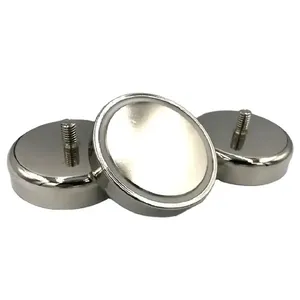

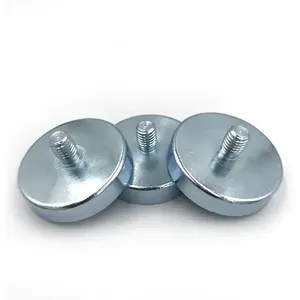











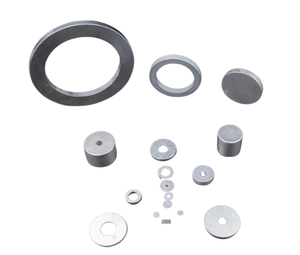

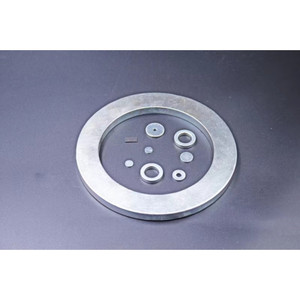
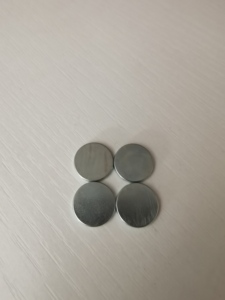









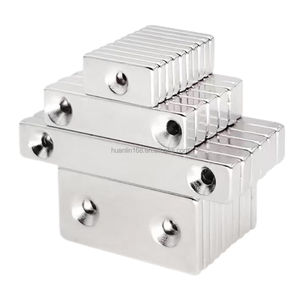
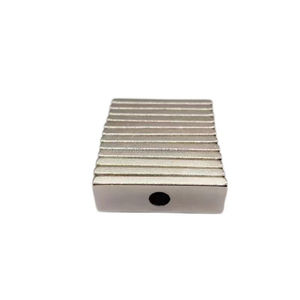

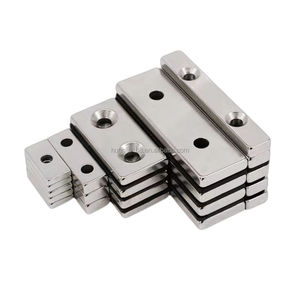



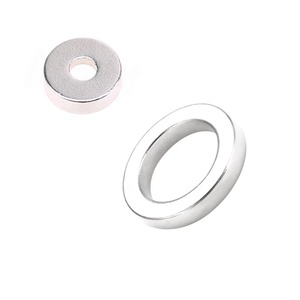
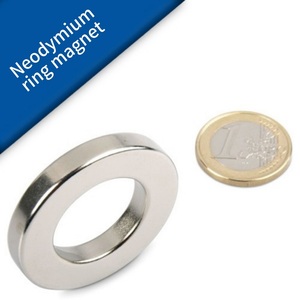



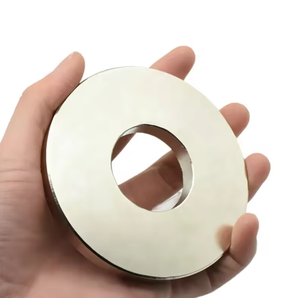





Permanent ring magnets, known for their consistent magnetic strength, are widely employed in various business applications. Below are the types available to wholesalers.
Neodymium ring magnets are among the strongest permanent magnets, created from an alloy of neodymium, iron, and boron. Consequently, this type of magnet is favored in many commercial uses due to its strength, size, and configuration. In addition, businesses often utilize these in electronics, motors, and magnetic assemblies.
Neodymium magnets come with a go-to magnetic strength at room temperatures. Nevertheless, those with higher temperature resistance properties are available. In addition, their corrosion resistance can be enhanced using nickel-copper-nickel plating or gold coating.
Ceramic ring magnets are made of iron oxide and barium or strontium ferrite. Because this permanent ring magnet is sturdy and budget-friendly, it finds plentiful use in low-strength applications. Common uses include speaker components, magnetic separators, and hardware for household items.
Usually, ceramic magnets in this category are resistant to demagnetization. Still, their magnetic power is noticeably lower than that of neodymium magnets. Also, these magnets are non-conductive, making them ideal for energy-saving devices. What’s more, due to their poor conductivity, these magnets are often used in systems that endure regular temperature fluctuations or in environments that are not suitable for magnets.
Samarium cobalt ring magnets are made of samarium and cobalt alloys. Normally, they are used when magnetic performance needs to be stable even at high temperatures, or when oxidation is a problem. These magnets are prevalent in defense, aerospace, and medical gadgets that require a long-lasting magnet.
Also, samarium cobalt magnets offer great corrosion resistance. Nevertheless, they tend to be more expensive than other permanent magnet options. Although they are costly, they are favored where performance and dependability are critical and are usually applied in high-tech environments.
Alnico magnets are built of aluminum, nickel, cobalt, and iron, and other metals. Normally, they are recognized for their durability and ability to maintain magnetic properties over long periods. Often, Alnico ring magnets are used in professional and industrial applications.
Commercially, these magnets are useful in electric motors, sensors, and precision instruments. It is important to note that while Alnico magnets do not match neodymium’s current-carrying capacity, their performance is optimal in elevated temperature environments. In addition, the strength of these magnets is not as great as that of other types, but their resistance to heat makes them suitable for a multitude of demanding applications.
Buyers should consider the following factors when purchasing permanent ring magnets in bulk.
Magnets shaped like rings, cylinders, or blocks are ideal for fitting in constrained spaces or specific designs. Ring magnets, for example, provide magnetic fields that allow metal slugs to move through the center. Cylinders, on the other hand, produce powerful magnetic fields suitable for PDMS molding and metal separation. Donut-shaped magnets offer uniform magnetic strength for motors and magnetic couplings.
Also, horseshoe magnets create concentrated magnetic fields to sort metals and easily attract screws and nails. U-shaped magnets, meanwhile, deliver higher pull forces when lifting heavy items. Consider these shapes depending on the intended application. Businesses that deal with magnetic assemblies, motors, and sensors should stock up on ring-shaped magnets.
The strength of a magnet increases with thickness. A thicker magnet generates a stronger magnetic field, which enables more effective operations like holding or lifting heavy components. Normally, thinner magnets are sufficient for lightweight tasks such as securing small electronic components.
Furthermore, large area magnets are suitable for spreading magnetic strength over a large surface. Thicker ring magnets, however, provide a concentrated magnetic force. Therefore, when choosing magnets, one should consider whether lightweight or heavy-duty tasks will be performed and select the appropriate thickness in each case.
Magnets are coated with brass, gold, silver, and nickel to prevent corrosion and oxidation. Normally, gold and nickel-plated magnets are used when aesthetics is of utmost importance. Also, nickel-coated ring magnets are ideal for magnetic coupling in chemical processes since they are non-destructive.
Furthermore, brass-coated magnets protect against oxidation and corrosion in chemical environments, while silver-coated magnets provide superior conductivity for electrical applications. Select metal-coated magnets when corrosion poses a risk to the application, and choose non-metallic coatings like epoxy or plastic when insulation is the priority.
Magnets marked with diametrically opposite poles, like N-S, allow the magnetic field lines between them to be the strongest. This orientation is essential for coupling and clamping applications involving two magnets. Radially oriented ring magnets are marked with the north pole on one face and the south pole on the opposite face.
Concentrated magnetic field lines, therefore, pass directly through the center, making them ideal for mechanical devices and assemblies. Partial N-S orientation, on the other hand, is appropriate for general magnetic applications that do not require extensive coupling. Where there is no need to control the direction of magnetic field lines, the meridional orientation suffices.
Ring magnets find applications in many sectors. Often, they are fundamental components in electric motors, generators, and sensors in the electronics and manufacturing industries. Their strong and compact design make them ideal for use in machinery and equipment.
Also, the automotive industry relies on ring magnets for electric motor components, sensors, and magnetic systems. In addition, in the healthcare sector, these magnets are utilized in magnetic resonance imaging (MRI) machines and other medical devices. The strong magnetic field of the magnet provides clear and accurate scans.
Apart from that, the aerospace and defense industries use ring magnets in navigation systems and aircraft components. These magnets are important in constructing speakers, microphones, and headphone components in the audio equipment industry.
At times, magnetic separation is used to remove unwanted metal contaminants from an intended product. Usually, ring magnets are powerful and capable of attracting even the smallest ferrous particles. In most cases, these magnets are utilized to improve food safety in the food processing and packaging industries.
They remove metal debris that would otherwise contaminate final products. This not only protects the health of consumers but also prevents product recalls that are expensive and damage brand reputation. Magnetic separation with magnets like neodymium ring magnets improves product quality and safety, reducing the risk of unsafe products entering the market.
Ring magnets help increase efficiency and lead to significant cost savings. In almost all cases, integrating these magnets into machinery and processes results in improved operational effectiveness. This eliminates the hassle of manually removing metal contaminants, saves time, and boosts productivity.
Thus, businesses are able to cut costs related to product recalls, quality control, and regulatory penalties. Dealing with metal contaminants issues causes more harm than good. Therefore, effective removal using strong magnets like ceramic ring magnets improves efficiency and lowers expenses.
The metrics that define the performance of a permanent magnet include magnetic strength, which is normally measured in gauss or tesla. For clarity, gauss are units of magnetic flux density, while tesla is one gauss equivalent to one weber per square meter. Also, coercivity measures a magnet's ability to withstand demagnetization, and the product of remanence and coercivity determines magnetic energy product or MR.
Typically, a higher value of this energy indicates greater magnetic strength and storage capacity. Ring magnets are assessed with factors such as size, inner and outer diameter and axial width. Usually, these factors determine compatibility and applications. The material of construction, which can be neodymium, ceramic, or samarium, also influences magnetic performance.
Other specs like the tensile pull force, which indicates how much weight a magnet can lift vertically, and the shear pull strength, the horizontal weight a magnet can hold, are measured in pounds. Moreover, the Brinell hardness number determines a magnet’s ability to resist wear. Adhesive forces are, therefore, used to characterize the holding power of a magnet.
Testing is performed on ring magnets to ensure they meet the required specifications and industry standards. Normally, this testing is done in a controlled and reliable environment. Also, testing methods include measuring magnetic field strength using a gauss meter and coercivity testing using demagnetization equipment.
The material composition of the magnet is evaluated to ensure it meets quality requirements using methods like X-ray fluorescence spectroscopy. Ring magnets are subject to tensile strength tests. These tests ensure that they can withstand mechanical stresses in industrial applications.
Assessing corrosion resistance using salt spray tests ensures that the magnet performs well in demanding environments. Quality assurance entails regularly calibrating magnetic measurement equipment to guarantee precise readings. In addition, test samples of the same batch of magnets are evaluated to ensure consistency in magnetic characteristics and dimensions.
Mostly, the results are documented and compared to industry standards to guarantee compliance. In addition, defects are identified, and corrective actions are taken as quality assurance maintains reliability.
Permanent ring magnets should be stored in a controlled environment to reduce accidental injuries. This is because this type of magnet has a strong attraction to metal objects and tools. As explained, the magnets are kept away from electronic devices, credit cards, and metal objects.
In addition, precautions are taken when handling large magnets to avoid pinching injuries, and workers wear protective equipment such as gloves and safety glasses. Furthermore, lifting equipment is used to move large magnets to prevent injury from the weight of the objects.
This type of permanent magnet is one of the strongest on the market, with a magnetic field of about 1.4 tesla. Rings are manufactured in different sizes, with common dimensions having a 25 mm outer diameter and a 6 mm inner diameter. In addition, they have a 5 mm axial thickness. The bigger the size, the stronger the magnet.
Ring magnets have different levels of magnetic strength, thickness, and sizes. Neodymium magnets are strong and corrosion-resistant. Thus, they can be used under extreme conditions and for generations. Coated neodymium magnets should, however, be handled with care.
Ceramic ring magnets are weaker but more resilient to wear and tear. Commonly, they are used in industrial settings. Alnico ring magnets are long-lasting and can be used under extreme conditions. Nevertheless, they are brittle and may chip if mishandled. Samarium cobalt magnets are corrosion-resistant. Often, they are used in medical devices.
The durability and robustness of magnets contribute to their significant commercial value. Moreover, these magnets come in various shapes, sizes, and configurations, making them highly adaptable. Also, these magnets are integrated into many products and industrial systems. Thus, they are critical components in electronics and machinery.
Another thing, ring magnets have diverse applications across industries. These include motors, sensors, and magnetic couplings in the automotive, aerospace, and healthcare businesses. Often deemed a cost-effective solution, neodymium magnets deliver reliable performance while taking up little space. This, plus the growing demand for efficient magnetic components, propels their market appeal.